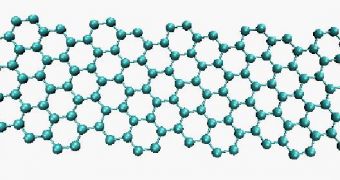Producing nanoribbons is a very complex and costly effort, and making large amounts of the material is absolutely necessary for conducting large-scale, extensive studies on its properties. Experts believe that the stuff could be the future of electronics and that the potential applications for it are far-reaching. In order to provide their fellow researchers with sufficient amounts of nanoribbons, scientists at the Stanford University have devised a new way of producing them, by simply slicing open carbon nanotubes.
Naturally, the term “easy” is used here with its loosest meaning. Basically, the research team, led by expert Hongjie Dai, the J.G. Jackson and C.J. Wood professor of chemistry at the SU, created a way of splitting nanotubes right down in the middle, as if with a zipper. Naturally, when working at the nanoscale, the role of the zipper is taken by plasma, used to create a chemical etching effect.
However, the production process as a whole is a whole lot less complicated than it would be if the scientists were looking to create the ribbons directly.
It's relatively easy to grow large numbers of carbon nanotubes, but splitting the very delicate and fragile structures down in the middle is not very much so. Thus, the SU team found an innovative approach to do that. They created a special substrate for the nanotubes to lie on, after they were covered with a special polymer.
Yet, the polymer does not cover their entire surface, but leaves open the tiny stretch on the nanotubes that is affixed to the substrate. When the polymer film is peeled off, the side of the nanotubes that is without the protective film is exposed, and then high-concentration plasma jets are used to cut out just those tiny areas where the nanotubes previously sat on the substrate.
“Once we overcame the hurdle of how to unzip the nanotubes, everything seemed so obvious. It is one of those things where you go, 'why didn't I think of that earlier'?” Dai said. “We can open up every carbon nanotube at the same time and convert many nanotubes into ribbons at the same time. How much better computer chips using graphene nanoribbons would be than silicon chips is an open question. But there is definite potential for them to give a very good performance.”
The expert also added that the new technique allowed for the creation of one to tens of thousands of nanoribbons at the same time, which would undoubtedly provide other researchers with vast amounts of the material they needed in their studies. As soon as a “production line” is set up, we could see a number of innovations in electronics appearing over the next few years.

 14 DAY TRIAL //
14 DAY TRIAL //